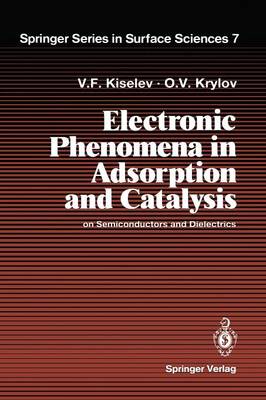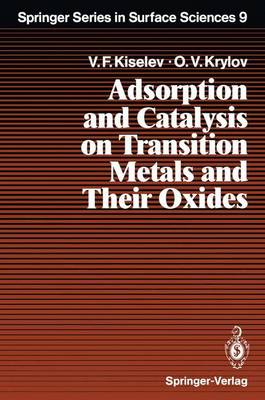Springer Series in Surface Sciences
2 primary works
Book 7
Electronic Phenomena in Adsorption and Catalysis on Semiconductors and Dielectrics
by Vsevolod F. Kiselev and Oleg V. Krylov
Published 1 June 1987
It is now firmly established that various adsorptive and catalytic processes taking place on the surface of semiconductors and in MIS structures strongly influence their electronic properties and hence modify the parameters of semi conductor devices. The inverse problem of how the semiconductor's electronic subsystem influences adsorption and dissociation of molecules at the surface has been recognized but much less explored. The main purpose of the present book is to generalize the experimental data and explain the relationship be tween these two classes of phenomena. We also discuss tentative models of surface electronic states and their interaction with adsorbed molecules. The subject of this book should attract the attention of researchers work ing in the overlapping areas of physics and chemistry, and of physics and biology. The research done in this field will help to widen the scope of semi conductor applications by finding novel ways of employing surface effects in the construct ion of mi croe 1 ectroni c devi ces, semi conductor gas ana lysers, solar cells, etc. The authors hope that this book will be useful to a wide circle of chemists and physicists concerned with the study of interphase phenomena and questions of adsorption and catalysis. Certain parts of the book will be helpful to physicists and technicians working in rapidly developing branches of semicon ductor physics and technology. The book can also serve as a textbook for both under- and postgraduates speci al i zi ng in thi s fi e 1 d.
Book 9
Adsorption and Catalysis on Transition Metals and Their Oxides
by Vsevolod F. Kiselev and Oleg V. Krylov
Published 11 May 1989
This book deals with adsorption and catalysis on the surface of transition elements and their compounds, many of which are in teresting because of their particular electronic structure. The authors have worked through a vast body of experimental evi dence on the structure and properties of surfaces of transition metals and relevant oxides. Consideration is given mostly to simple (as opposed to mixed) oxides of transition elements, to common metals and to the adsorption of simple gases. A great deal of attention is paid to the nature of active surface sites responsible for chemisorption and catalytic transformations. The description relies mainly on the simplified ligand-field theory, which, however, proves quite satisfactory for predicting the adsorptive and catalytic activity of species. In many cases simple systems were explored with the aid of novel techniques, and it is only for such systems that the mechanism of the ele mentary act of adsorption and catalysis can be given adequate treatment. The present monograph has emerged from our earlier work in Russian, which appeared in the Khimiya Publishing House (Mos cow) in 1981. This English edition has, however, been revised completely to broaden its scope and to include more recent a chievements. For fruitful discussions the authors are grateful to A.A."

